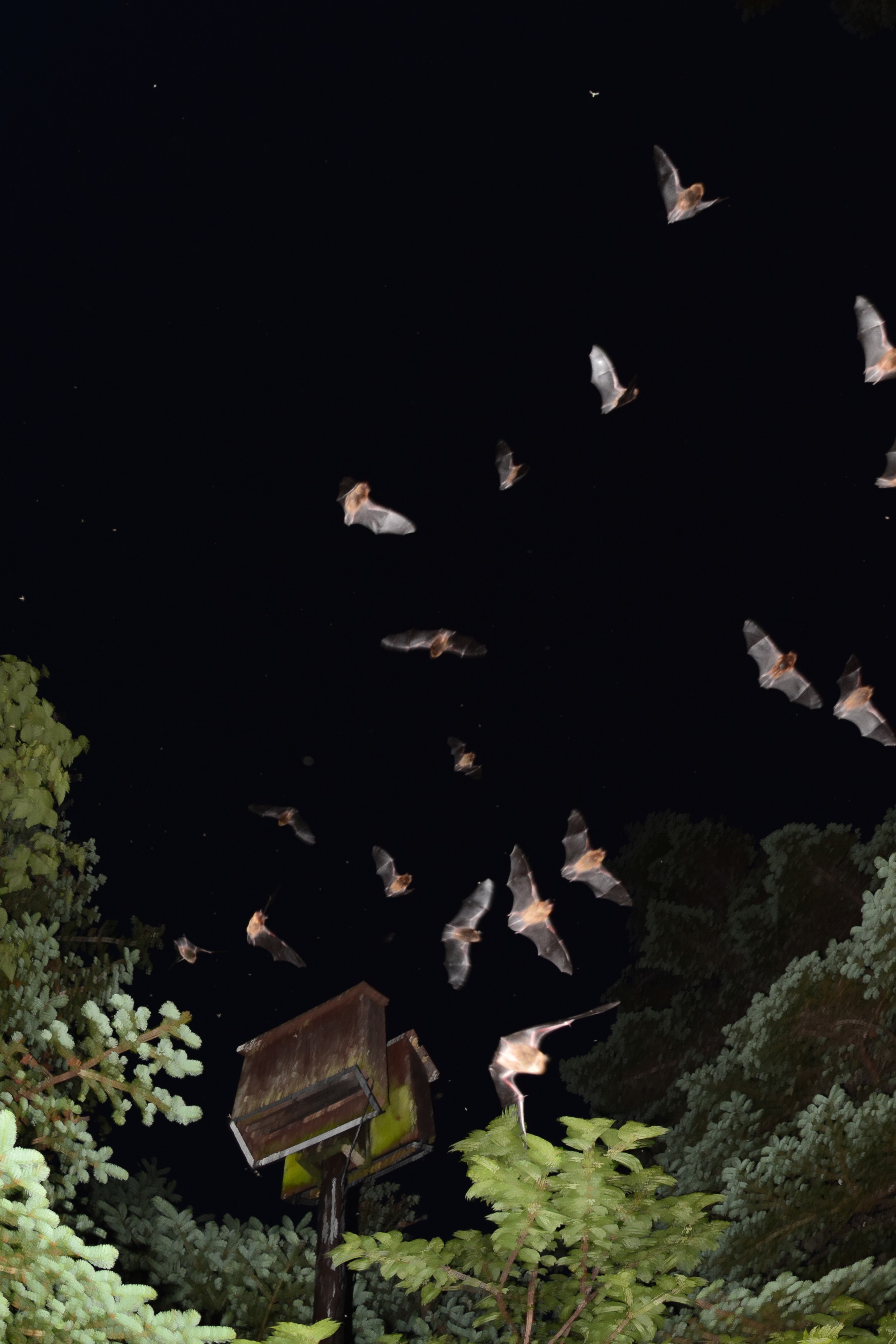More information about what bat boxes bats use in Canada will help bat conservation by providing recommendations for improving bat box design in our northern climate
If you have a bat box and would like to participate in this study, please fill out this online multiple-choice survey with questions about your bat box. Your participation is important even if your box has never had any bats.
Bats in Canada face multiple threats such as habitat loss/degradation, diseases such as white-nose syndrome, and mortality from wind energy. Installation of bat boxes is frequently suggested as a conservation or enhancement tool for citizens wishing to assist bat populations. However, the effectiveness of bat box designs is not fully known in Canada. Some bat box designs currently used in Canada may not be optimal in promoting persistence and reproduction in different bat species, potentially due to inappropriate internal microclimates or mounting conditions.
Of the 18 bat species that are regularly found in Canada, 13 have been documented using bat boxes, although these data come from studies farther south in the United States. In Canada only 3 species are currently known to use bat boxes: little brown bats, big brown bats, and in the western provinces Yuma bats. Current recommendations on bat box design are based on research in the United States, especially Texas, and in Europe. Since the box design bats prefer varies by region and species, more information on bat boxes in Canada is urgently needed.
WANT TO KNOW HOW THINGS ARE GOING? Check out the Canadian BatBox Project newsletters!

.jpg?ver=dShtX8qXTR5dgptXVrASoA%3d%3d)









The Project:
Goals and Objectives:
Methodology & activities:
- If you have a bat box and would like to participate in this study, please fill out the online multiple-choice survey with questions about your bat box. Your participation is important even if your box has never had any bats. FILL OUT SURVEY!
- You can tell whether your box is being used by bats by searching for guano underneath your box and watching your box at sunset to count bats as they emerge for an evening of eating insects. You can watch an example of bats flying out of bat boxes in Prince Edward Island here. You can also shine a light up into the box during the day to see if there are bats inside from May to October in Canada. The boxes will be too cold for bats during the winter. Please refer to the emergence count protocols for this particular study to complete an emergence count.
- Participants will be sent temperature loggers to install in their box and supplies to collect guano, as bat species can be identified from guano.
Funders and Collaborators:
Partners in this project include: Parks Canada, the Canadian Wildlife Federation, Trent University (adjunct professor Christina Davy, Ministry of Natural Resources and Forestry and Christopher Kyle, Forensic Science) with PhD candidate, Karen Vanderwolf and Environment Canada and Climate Change (Habitat Stewardship program).
Links to Articles:
Batbox owners wanted: Researchers launch 3-year study to study health of bat populations. CBC News New Brunswick. March 20, 2021
Canadian Bat Box Project. Healthy Wildlife: Canadian Wildlife Health Cooperative Blog. October 2020
'Batboxes' could help revive Canada's depleting bat population. The Converation. July 25, 2021